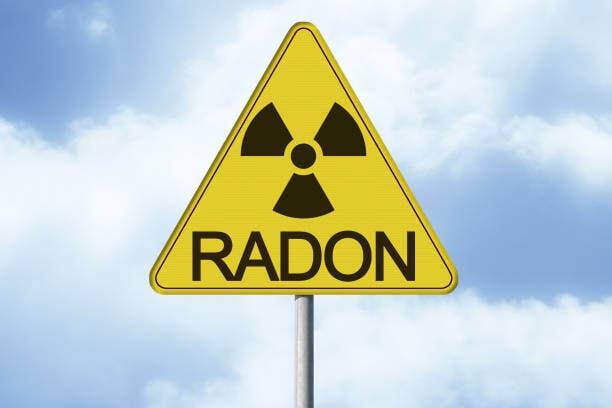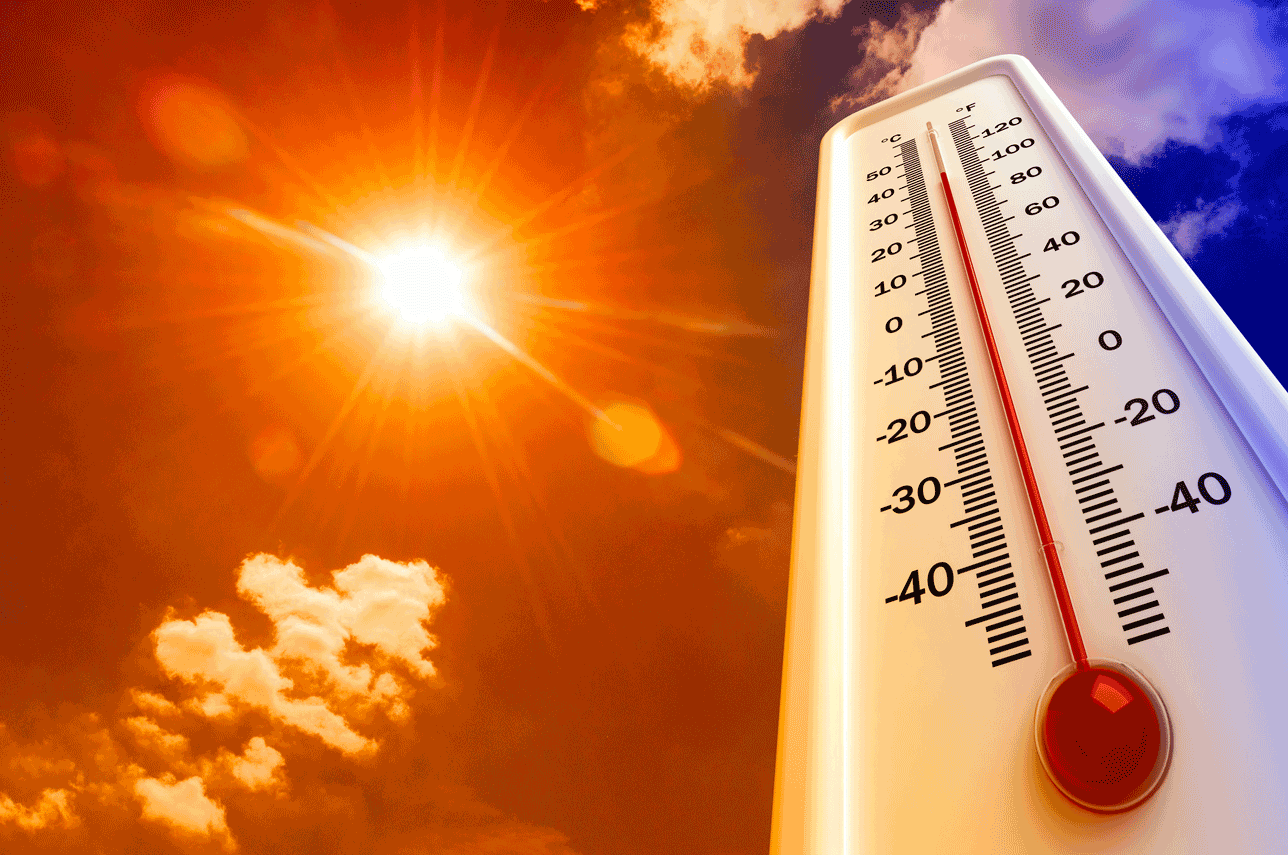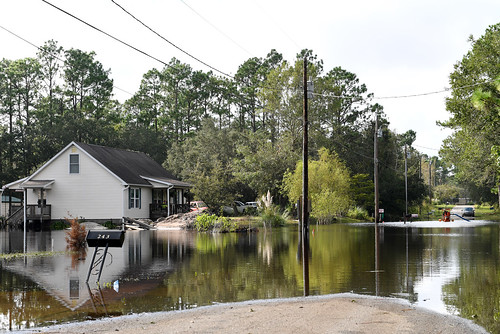Working in excessive heat can cause illness, whether outdoors (this summer again brought record-breaking heat to parts of North America), or indoors where equipment, combustion or other factors raise ambient working temperatures. Occupational safety and health agencies have slowly been expanding explicit requirements that employers protect their workers against heat stress. Most recently, the Maryland Department of Occupational Safety and Health (MOSH) adopted Heat Stress Standards effective September 30, 2024 (COMAR 09.12.32).
Audit, Compliance and Risk Blog
Maryland creates heat stress rules for indoor and outdoor work
Posted by Jon Elliott on Mon, Dec 23, 2024
Tags: OSHA, Heat, Maryland heat stress standards, MOSH heat regulations, Workplace heat protection, Heat index compliance, Occupational safety and heat illness, Heat stress prevention plan, High-heat procedures, OSHA proposed heat standards
Radon gas is released naturally by radioactive decay within rock formations, from where it can percolate to the surface and infiltrate basement and trenching, and then produce hazardous concentrations if trapped or spread throughout the structure by the ventilation system. Because of its radioactive origin, radon can pose health risks – it’s the leading cause of lung cancer in non-smokers. The US Environmental Protection Agency (EPA) administers extensive information programs, which encourage in-building testing (especially in housing), and provides guidance for hazard reduction. EPA’s authority derives primarily from the Indoor Radon Abatement Act of 1988 (codified as Title III of the Toxic Substances Control Act (TSCA)). In addition, the Occupational Safety and Health Administration (OSHA) considers radon a type of ionizing radiation subject to worker protection requirements. The remainder of this note provides background to radon hazards and their management, referencing information from EPA, OSHA and other agencies and professional organizations.
Read MoreTags: OSHA, Environmental risks, Environmental, EPA, workplace safety, Environment, Environmental Policy, Hazardous Chemicals
Agencies provide hurricane preparation and response guidance
Posted by Jon Elliott on Fri, Oct 25, 2024
In October, the US Occupational Safety and Health Administration (OSHA) and other federal agencies reacted to hurricanes in the Southeast by re-highlighting existing guidance to support preparation for potential hurricanes, and to respond if one occurs. OSHA’s guidance is directed at employers, the National Oceanic and Atmospheric Administration (NOAA) and the Environmental Protection Agency (EPA) provide more generalized guidance, and the Centers for Disease Control and Prevention (CDC) target families. The rest of this note summarizes this timely information, centering on OSHA’s offerings.
Read MoreTags: Health & Safety, OSHA, Environmental risks, Environmental, Environment, Weather, weather safety, hurricane
OSHA issues safety standards for the design and use of portable powered tools and other handheld equipment items. (29 CFR 1910.242 – 1910.244). These standards focus on safe use of powered hand tools, as well as on safety features such as lock-outs and guards. The standards define general requirements for all equipment defined as powered hand tools, including specific definitions for following: explosive-actuated; fastening tools; abrasive wheels; and jacks. The remainder of this note summarizes these requirements.
Read MoreTags: Health & Safety, OSHA, Safety and Health at Work, workplace safety
While the world adapts to the ongoing presence of COVID-19 and its hazards, other potential pandemic diseases continue to cause concerns. One example is avian influenza, also known as bird flu. In the US, the Centers for Disease Control and Prevention (CDC) and Occupational Safety and Health Administration (OSHA) note that avian influenza H5N1 was first seen in the U.S. in migratory birds in 2015, and in agricultural poultry stock beginning in 2022. Since then, a few mammal infections have been confirmed, and in April 2024, a dairy farm worker tested positive for avian influenza A (H5N1). This history confirms a slow expansion of pathways to infection, and at-risk species extending to include humans. There have not yet been confirmed human-to-human transmissions, which could trigger the next pandemic if they began to proliferate (just as COVID-19 did a few years ago). As these concerns rise, in August 2024 OSHA gathered and updated safety information about Bird Flu, which I summarize below.
Read MoreTags: Health & Safety, OSHA, Safety and Health at Work, workplace safety
On August 30, the Occupational Safety and Health Administration (OSHA) published its proposal to adopt a new Heat Injury and Illness Prevention Standard (29 CFR 1910.148) covering most OSHA-regulated employers. This rulemaking expands OSHA’s ongoing efforts to protect workers against heat hazards; previously, the agency has emphasized that known heat hazards trigger the Employer’s General Duty Clause (I wrote about OSHA’s National Emphasis Program for both outdoor and indoor workplaces HERE ).
Read MoreTags: Health & Safety, OSHA, Safety and Health at Work, workplace safety, Heat, Be Heat Smart
California adds heat protection rules for indoor workplaces
Posted by Jon Elliott on Wed, Aug 07, 2024
This summer has again brought record-breaking heat to parts of North America. Outdoor work in the summer sun can lead to heat illness, as can indoor work in spaces that aren’t sufficiently insulated or cooled. Since 2005, California's Division of Occupational Safety and Health (Cal/OSHA) administers detailed regulatory requirements for outdoor workplaces; other jurisdictions have since adopted similar requirements (I wrote about these HERE). Indoor workplaces have been considered, too (the federal Occupational Safety and Health Administration (OSHA) initiated a National Emphasis Program for both outdoor and indoor workplaces in 2021, which I wrote about HERE). On July 23, 2024, California adopted new requirements governing indoor workplaces (8 California Code of Regulations (CCR) 3396), which I discuss in the rest of this note.
Read MoreTags: OSHA, Safety and Health at Work, workplace safety, Heat Wave, Heat, Be Heat Smart
In June, the US Occupational Safety and Health Administration (OSHA) and other federal agencies reacted to flooding in Florida by re-highlighting existing guidance to support preparation for potential flooding this summer, and to respond when it occurs. OSHA’s guidance is directed at employers, while the National Weather Service (NWS) provides more generalized guidance and the Centers for Disease Control and Prevention (CDC) target families. The rest of this note summarizes this timely information, centering on OSHA’s offerings.
Read MoreTags: OSHA, Environmental risks, Environmental, CDC, Environment, Environmental Policy, NWS
OSHA requirements for employers’ emergency response activities
Posted by Jon Elliott on Wed, Jul 10, 2024
The Occupational Safety and Health Administration (OSHA) establishes Emergency Response planning, training, and procedure requirements for employers, as one self-contained part of its multi-pronged Hazardous Waste Operations and Emergency Response (HAZWOPER) Standard (29 CFR 1910.120). This note describes these requirements, and places them in the context of a variety of emergency response planning requirements.
Read MoreTags: Health & Safety, OSHA, Safety and Health at Work, workplace safety, Hazardous Waste
Since the 1980s, the Occupational Safety and Health Administration (OSHA) has required most employers to protect their workers from workplace chemical hazards, and to train workers to protect themselves. Most employers are subject to OSHA’s Hazard Communication Standard (HCS; 29 CFR 1910.1200), or to variants imposed by states delegated OSHA’s authority. Many of the present requirements were established by massive revisions adopted in March 2012, when OSHA recast HCS to align it with the United Nations-sponsored Globally Harmonized System of Classification and Labeling of Chemicals (GHS). OSHA’s 2012 revisions conformed the US to GHS Revision 3, which was issued internationally in 2002. The most obvious change was the adoption of Safety Data Sheets (SDSs) to replace longstanding Material Safety Data Sheets (MSDSs), but employers faced a series of deadlines during 2013-2016.
On May 20, 2024, OSHA significantly updated HCS requirements for the first time since 2012, primarily to reflect GHS changes through Revision 7 (which was published in 2017). OSHA’s revisions take effect on July 19. The remainder of this note summarizes these changes, based on the affected subsections or appendices.
Read More
Tags: OSHA, Safety and Health at Work, workplace safety, Hazardous Waste, Hazard Communication, Hazardous Chemicals










